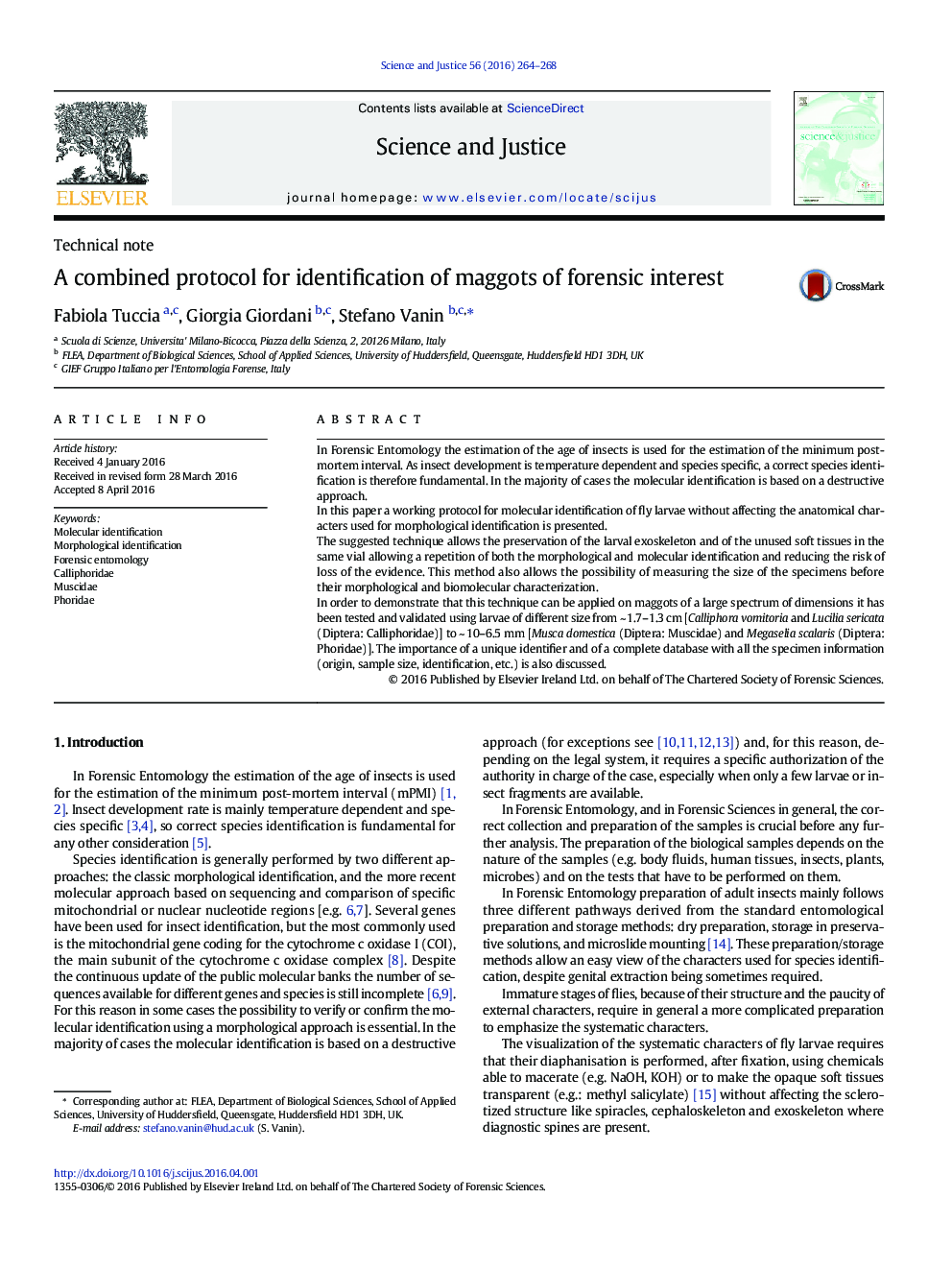| Article ID | Journal | Published Year | Pages | File Type |
|---|---|---|---|---|
| 106859 | Science & Justice | 2016 | 5 Pages |
•A new protocol for immature insect of forensic interest preparation is presented.•Tissues, for molecular identification, are removed preserving the exoskeleton.•This method allows the repetitions of morphological and molecular analyses.•The method has been validated using larvae of different sizes from the 6.5 to 17 mm.
In Forensic Entomology the estimation of the age of insects is used for the estimation of the minimum post-mortem interval. As insect development is temperature dependent and species specific, a correct species identification is therefore fundamental. In the majority of cases the molecular identification is based on a destructive approach.In this paper a working protocol for molecular identification of fly larvae without affecting the anatomical characters used for morphological identification is presented.The suggested technique allows the preservation of the larval exoskeleton and of the unused soft tissues in the same vial allowing a repetition of both the morphological and molecular identification and reducing the risk of loss of the evidence. This method also allows the possibility of measuring the size of the specimens before their morphological and biomolecular characterization.In order to demonstrate that this technique can be applied on maggots of a large spectrum of dimensions it has been tested and validated using larvae of different size from ~ 1.7–1.3 cm [Calliphora vomitoria and Lucilia sericata (Diptera: Calliphoridae)] to ~ 10–6.5 mm [Musca domestica (Diptera: Muscidae) and Megaselia scalaris (Diptera: Phoridae)]. The importance of a unique identifier and of a complete database with all the specimen information (origin, sample size, identification, etc.) is also discussed.
